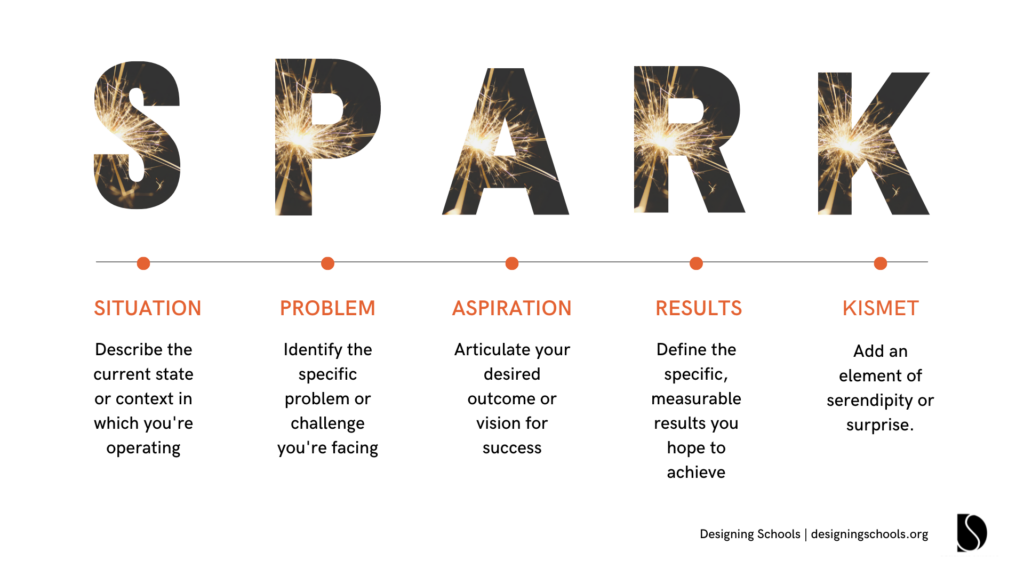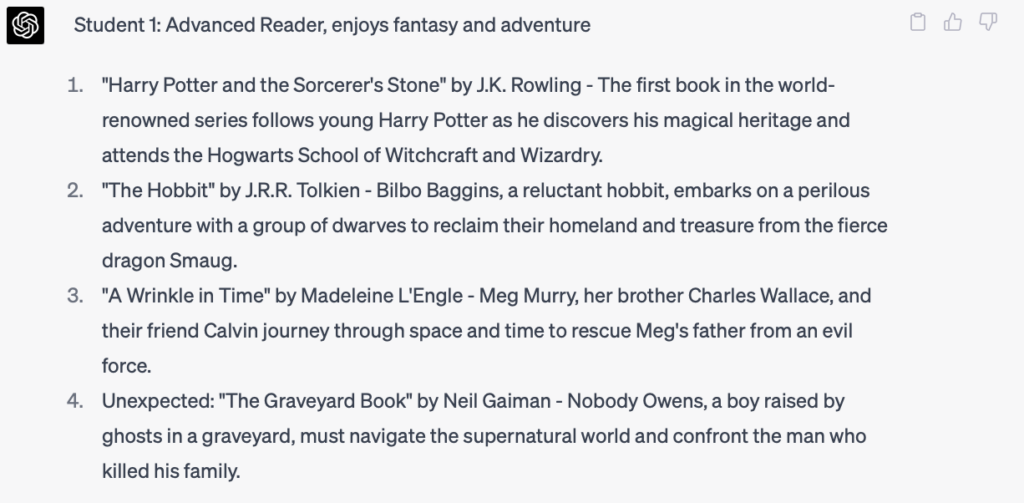The rapid acceleration of artificial intelligence (AI) is transforming our world, and the emergence of chatbots like ChatGPT, and the integration of AI into Microsoft with Co-Pilot and others is a testament to this revolution. As we witness these groundbreaking advancements, schools have a critical role to play in preparing learners for a future that is already here.
As AI rapidly advances and becomes an integral part of our daily lives, we must adapt our educational systems to foster the skills and mindsets required to thrive in this new landscape. Now, more than ever, we need to embrace change and adopt innovative problem-solving approaches like design thinking, to reshape education and unlock the full potential of our learners with the skills that make us uniquely human.
While using ChatGPT can be great for writing emails, and automating our mundane tasks, it presents a larger opportunity to have a thought partner to solve challenges with, and design strategies for turning ideas into impact.
In this post, I share a framework called SPARK for designing effective prompts with ChatGPT and other generative AI tools.
Your Human Advantage: Using the SPARK Framework with ChatGPT
What Makes Us Uniquely Human
When thinking about your role, what do you want to be known for?
What you hear people respond with are the qualities that make us uniquely human. Traits like being a mentor, being reliable, being mission-driven as a leader, and being a role model for the values of the organization.
This question was inspired by the book Atomic Habits. And it has been an incredibly powerful question that sparks a connection in the audience as people reconnect and reflect on who they want to be. This has become my favorite question to ask any group I’m working with. And I encourage you to ask this as well. I have found that this subtle reminder of what makes us uniquely human creates an optimistic and enthusiastic environment when discussing AI technologies.
Join the 5-Day Master ChatGPT Challenge
The Master ChatGPT Challenge is a five-day journey that combines the power of AI with design thinking to help you supercharge your problem-solving skills and creativity.
Using the SPARK Framework to Generate Ideas with ChatGPT
These moments of sharing our hopes, dreams, and fears connect us and make us uniquely human. When we ask people what is holding them back, I am always in awe of the vulnerability with which people share. It’s these curiosities that can help us SPARK the use of AI. To help you do this I created a framework you can use to apply design thinking when using ChatGPT to turn your obstacles into opportunities.

SPARK Ideas with AI
The SPARK framework was designed to help people reconnect with their hopes and dreams. Individuals and teams can use this to guide them through the process of identifying and solving problems by creating a clear, concise, and compelling narrative around a specific issue or challenge.
Note:
Always begin by confirming any method you use with the chatbot. In this example, we will use ChatGPT. This is the case for any method or strategy, always confirm what it knows.
[START PROMPT] I want you to remember this framework and use it to help me design a solution.
- Situation: Define the current situation or context that needs to be addressed.
- Problem: Identify the problem or challenge that needs to be solved.
- Aspiration: Describe the desired outcome or goal that you want to achieve.
- Result: Explain the specific, measurable results that will be achieved through your solution.
- Kismet: Share an element of surprise
Tell me when you remember [END PROMPT]
SPARK in Action: Education Example
Here you begin by describing the situation. The same way you onboard a new hire, is the same way you want to onboard your AI. Tell them about your unique context, the more details you input, the more precise your output will be.
Example:

Once we enter the prompt into ChatGPT your assistant gets to work! The key to continuing the conversation is to treat it like your assistant. Scroll through the gallery to see the conversation.
It All Starts with A Human Prompt
With technology this powerful it’s a shame to simply use it to substitute tasks like quizzes and grading. While those are important elements, this is an opportunity to step back and really examine what your learners need. What experiences do you wish you could create but simply don’t have the time to do?
Integrating the SPARK framework into how you use tools like ChatGPT can help you focus on developing skills. Such as creativity, collaboration, communication, and problem-solving. These skills are the foundation for success in the age of AI. They enable individuals to adapt to new technologies, engage with complex issues, and contribute meaningfully to society. By fostering these skills, we can ensure that students are better prepared to navigate the rapidly changing landscape of the 21st century.
The Future of AI in Education
As we look to the future, the integration of AI, like ChatGPT, into various aspects of our lives will only continue to accelerate. As a society, we must rise to the challenge and seize the opportunity to reshape education. Ensuring that the next generation of students and educators can thrive in this new era.
Let us come together as educators, policymakers, parents, and students to champion the adoption of design thinking in our schools. By doing so, we can dismantle the panopticon-like structures that have stifled innovation and creativity in education for far too long. The future of our world depends on our ability to adapt, learn, and grow. It’s time to embrace change and unlock the limitless potential of our students and teachers. Together, we can create a brighter, more prosperous future for all.
If you’re interested in learning more about strengthening your AI literacy skills with how you use ChatGPT, and other AI tools to create dynamic and engaging learning experiences I invite you to join our first cohort of The AI Bootcamp, a self-paced course that begins May 17.

I’m Sabba.
I believe that the future should be designed. Not left to chance.
Over the past decade, using design thinking practices I've helped schools and businesses create a culture of innovation where everyone is empowered to move from idea to impact, to address complex challenges and discover opportunities.
stay connected
designing schools







